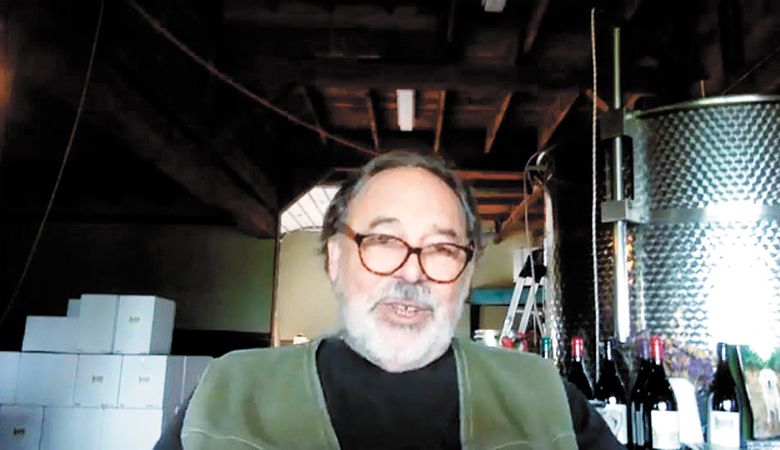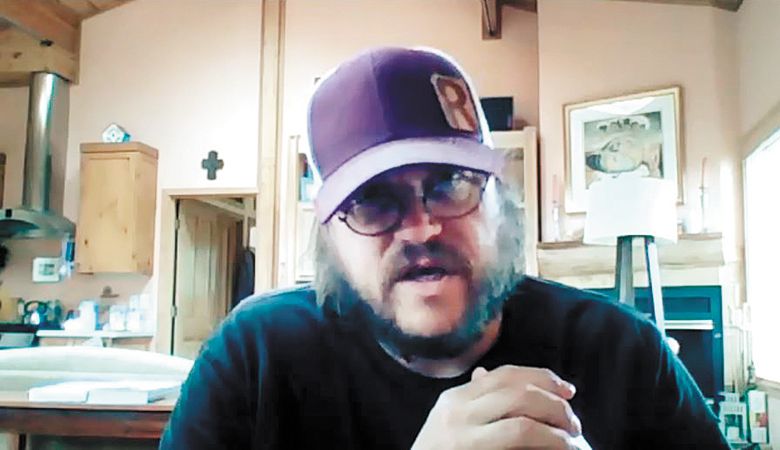Zooming into Slow Wine
Slow Wine Guide persists with interviews despite pandemic
In the “Slow Wine Guide 2019,” 50 Oregon wineries were reviewed for the first time, joining California as the only regions included outside Italy. Acknowledging “Oregon’s commitment to sustainable winemaking and respect for the terroir… consistent with Slow Wine’s principles and its mission to support local agriculture,” the state will be featured yet again in the 2020 guide, highlighting 69 local wineries — some 89 are currently under consideration for next year’s release, alongside the debut of Washington and New York wineries.
The “Slow Wine Guide,” a byproduct of the Slow Food movement, first appeared in 2010. Until now, it required its field coordinators, like me, to make onsite visits to all the wineries, meeting and tasting with a principal, preferably the owner or winemaker. In these strained times, the rules had to change. National editor of the guide’s U.S. edition, Deborah Parker Wong, wrote “We will not be making any in-person winery visits this year,” instead “we [will] record virtual tastings with the winemakers/vintners on Zoom or Skype (or your preferred platform) then share the recordings.” I was granted dispensation since seven of the 10 wineries I covered agreed to meet in person with precautions taken. The remaining three tastings were over Zoom.
Before I share my experiences, a word about the winery selection criteria is merited. While formal certification is not required, adherence to sustainable practices is. “We do not include wineries that use synthetic inputs for weed control, i.e. glyphosate, that are not permissible in organic or Biodynamic programs, period,” stresses Wong. Of course, quality is important, with quality-value ratio particularly prized.
Returning coordinators were asked to revisit wineries they had previously covered. I had done nine and added a tenth. In addition to short writeups about the people and vineyards, I prepared notes on three of the wines tasted. What follows are snapshots of my encounters with wineries presented alphabetically:
I met with Brian O’Donnell at Belle Pente Vineyard & Winery to taste three of his Pinot Noirs, the fruity 2017 Murto Vineyard, the aromatic 2017 Belle Pente Vineyard, and the texturally interesting 2016 Estate Reserve. Brian’s wines consistently offer excellent value and high quality.
Josh Bergström of Bergström Wines and I tasted together on Zoom. I had picked up seven bottles, three single-vineyard Chardonnays — the first releases of these wines — and four single-vineyard Pinot Noirs, all from 2018. Thanks to my Coravin, I was able to draw off samples of each and save the rest. The Bergström Vineyard Chardonnay offered nutty, lemony aromas and a wonderful palate with distinct salinity. The expansive Salice and flowery Le Pre du Col Vineyard Pinot Noir are also in my submission.
I visited with Pattie Björnson and her winemaker, Scott Sabbadini, at Björnson Vineyard, another source of high quality-to-price bottles. Of note remain the bright 2019 Viola Auxerrois, the creamy 2017 Reserve Pinot Noir and the floral 2017 Isabel Pinot Noir.
For our Zoom session, Doug Tunnell of Brick House Wines provided the juicy 2018 “Cascadia” Chardonnay, a complex 2018 “Les Dijonnais” Pinot Noir, and the accessible 2018 “Halliday Hill” Pinot Noir, all sourced from the Biodynamic-certified estate vineyard.
Assistant winemaker Tracy Kendall hosted me at the interim tasting room of Domaine Nicholas-Jay. She poured the first release of the hunger-inducing 2018 Affinitiés Chardonnay and three 2017 Pinot Noirs, including the elegant Willamette Valley and the polished Bishop Creek.
During my stop at the winery, Patrick Reuter, owner and winemaker of Dominio IV, shared six bottles: a Viognier, a Syrah, two Tempranillos, a Chardonnay and a Pinot Noir, displaying his broad interest and versatility. The intriguing 2017 Imagination Series Chardonnay from Wahle Vineyard, the pretty 2015 “Sketches of Spain” Tempranillo, and the food-friendly 2014 “Rain on Leaves” Pinot Noir made my report.
This was the first year I covered Kelley Fox Wines. During my onsite visit, Fox poured three examples of her delicate, subtle Pinot Noirs. The 2017 Hyland Vineyard Coury Clone is still tight but elegant. The 2018 Maresh Vineyard Star-of-Bethlehem Flower Block offers a creamy cherry, spicy nose with steely notes on the palate. From own-rooted vines planted in 1970, the 2018 Maresh Vineyard showcases a captivating mix of earth and delicate floral notes.
Tahmiene Momtazi and her father, Moe, of Maysara Winery treated me to tastes of seven wines at their estate. The three I submitted include the 2019 Arsheen Pinot Gris, a portion of which was aged in a concrete egg resulting in great texture and mouthfeel. The explosive 2016 Jamsheed Pinot Noir, always an outstanding value, and the 100% whole-cluster-fermented 2015 Rumi Pinot Noir also made the cut.
Chris Berg of Roots Wine Co. and I tasted over Zoom. He had given me two Pinot Noirs and two whites. The beautifully balanced 2019 Pinot Gris is redolent of grapefruit. The 2019 Sauvignon Blanc is barrel-fermented, yielding a smooth mouthfeel to complement the great acidity. Both are excellent values. Having received a particularly abundant crop from his source, Chris has been experimenting with various expressions of Sauvignon. Exhibiting dark fruit, flowers, and polished oak aromas, the 2018 Saffron Field Pinot Noir is surprisingly delicate on the palate with a lingering finish and fine tannins and acidity.
Because the tasting room had not opened, Jason Lett, with mask in place, dispensed seven classic wines from The Eyrie Vineyards via his Coravin, making it particularly difficult to choose which to highlight. The 2018 Estate Pinot Gris offers a rich complex aroma of pears and flowers with mouthwatering flavors, beautiful acidity and salinity. Sourced from the 57-year-old vines, the 2017 Original Vines Chardonnay is an elegant and delicately savory example with just a hint of oak and great balance. While drinking well now, the 2016 Outcrop Pinot Noir has many more years to go. The nose is juicy fruity with some herbal undertones.
Field coordinators are asked to nominate wineries for awards to recognize notable interpretations of the values of the guide and value for the money, and wines for outstanding sensory quality, finest bottles from a sensory point of view, and excellent value. As Wong reports: “When it’s business as usual, everyone gathers for the awards tasting of all the wines that have been nominated by the field coordinators. We had several hundred last year for California and tasted for two full days. As we will not be meeting this year, awards will be given based on the nominations by the field coordinators and approval of the directors…” The results will be included in the “Slow Wine 2021 Guide,” which will be released early next year.
During this extraordinarily unhurried period, Slow Wine took on a meaning beyond that relating to its production and origin. With my schedule more open, I was able to linger over the wines, letting them evolve over time. This was especially important since most were young and some, recently bottled. The overall excellence and variety I tasted unquestionably ensures that Oregon wine’s reputation will remain outstanding in the field.













